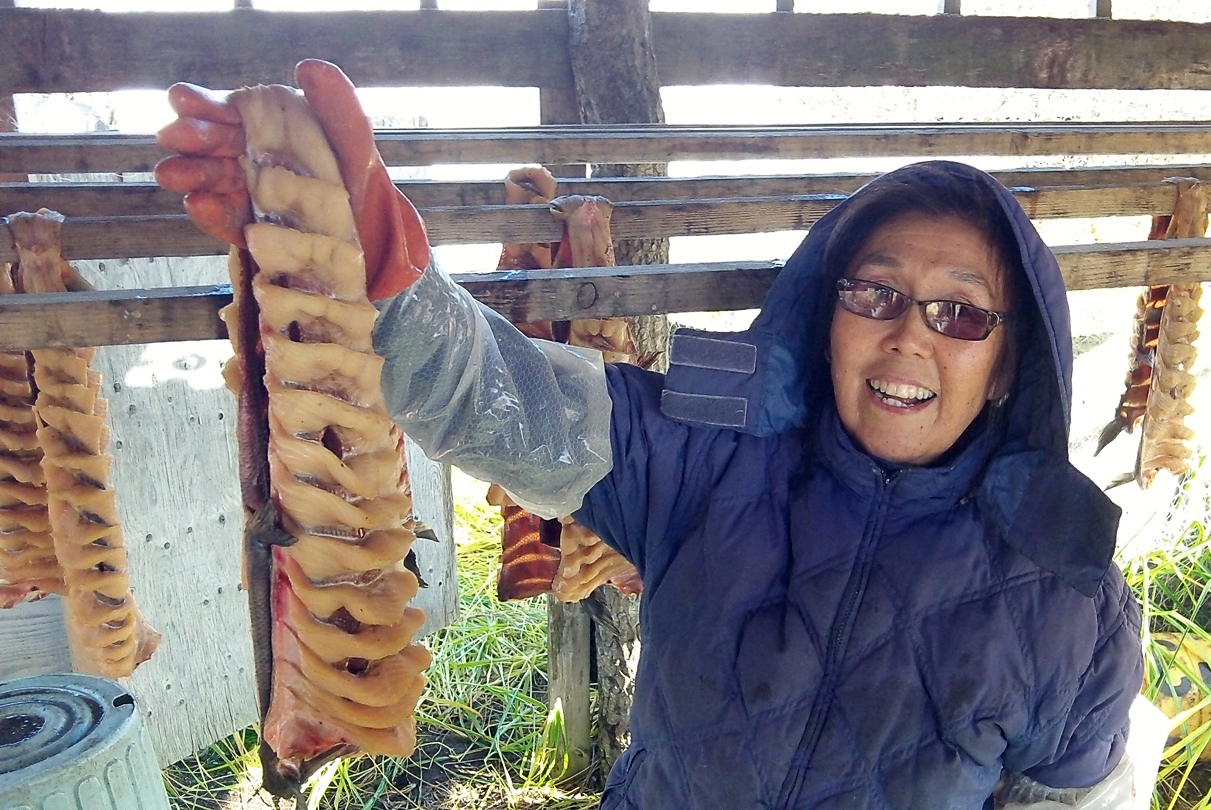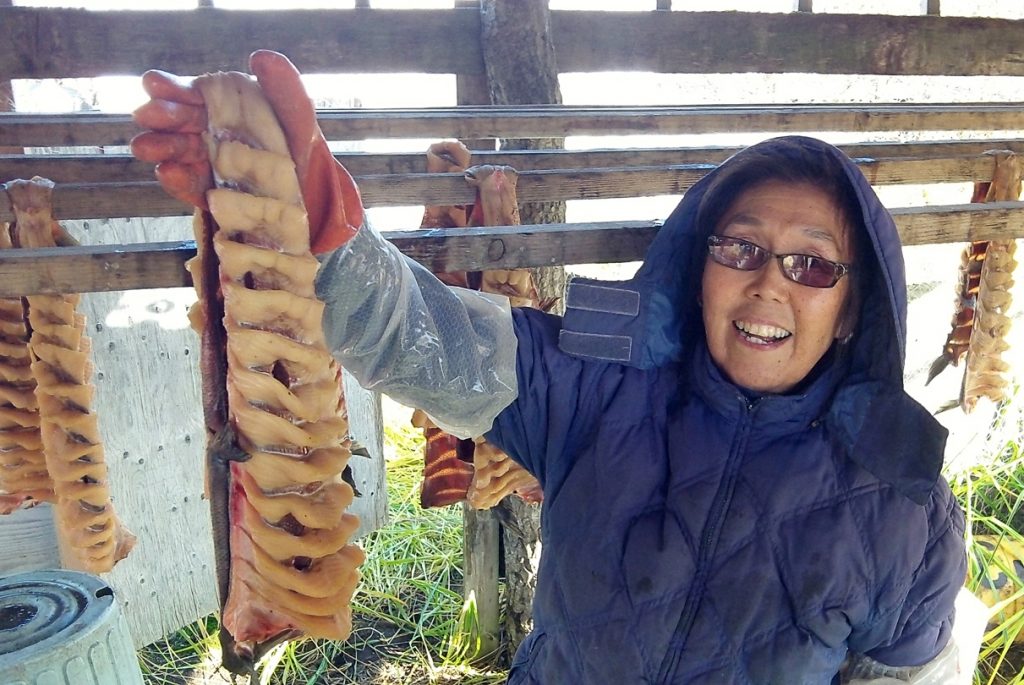

For the people of Bristol Bay, wild fish and clean water are more than healthy food sources. They are a connection to the past, inspiration for art, shapers of language, and resources full of spiritual meaning.
The strong influence of salmon on cultural practices and belief systems makes the Dena’ina and Yup’ik among the last salmon-based cultures in the world. The U.S. Environmental Protection Agency (EPA) draft Bristol Bay Watershed Assessment includes a lengthy article about these cultures, written by Alan Boraas, Ph.D, and Catherine Knott, Ph.D, both anthropology professors at Kenai Peninsula College.
“Traditional Ecological Knowledge and Cultural Characterization of the Nushagak and Kvichak Watersheds, Alaska” includes information from multiple resources, and excerpts of interviews with 53 Elders and culture bearers from seven Bristol Bay communities.
Interviews illustrate that belief systems of the Dena’ina and Yup’ik peoples are tied directly to water and salmon. Common beliefs include:
- To be healthy, people need salmon and other wild foods.
- Salmon are shared with family and friends, and people feel good when they give or receive salmon.
- It is important for families to fish together.
- Salmon and streams both have spirits. When the first salmon of the season is caught, people give thanks through prayer and an offering.
Eating fish that is connected to fish their ancestors ate is important to Yup’ik and Dena’ina descendents living today, write Boraas and Knott. The researchers cite studies saying people can become genetically changed from eating the same salmon in as little as 3,000 years. Salmon-based traditions go back thousands of years. Ancestors of the Yup’ik peoples relied on salmon as an important part of their diet as long as 4,000 years ago. “Evidence is building that Yup’iks are biologically adapted to salmon,” wrote Boraas and Knott. Moreover, an active subsistence lifestyle and high intake levels of omega-3 fatty acids from fish are important factors for good cardiovascular health. As one Elder noted, “If we don’t eat fish, we won’t have anything to eat. That is our health.”
“We want to give to our children the fish, and we want to keep the water clean for them … It was a gift to us from our ancestors, which will then be given to our children.”
—Elder interview, Boraas/Knott report
The Yup’ik and Dena’ina languages include very specific vocabulary related to fish and water, which further emphasizes their cultural importance. For example, in Yup’ik, the word aciirturtet means “the first group of king salmon running under the smelt.” This is just one of several cultural terms included in the Boraas/Knott study. The Dena’ina language has similar descriptive terms about fish, and also explains physical directions in relation to streams. Instead of using markers like “north” or “south,” the Dena’ina people would describe a location in terms of whether it was upstream or downstream of a particular spot on the river.
Connections to fish and water are seen through spiritual beliefs, such as reverence for nature and animals and the importance of sharing food with family, friends and even other villages in need. Over time, Alaska Native beliefs have blended with Russian Orthodox views, which put the “old beliefs” in a Christian context. Specific celebrations such as the “Blessing of the Waters” (keeping the water clean and free of contaminants) and the “First Salmon Ceremony” (sharing the first king salmon catch) are examples of spiritual activities that hold great meaning for these Native cultures.
As the Boraas/Knott study shows, the health of the Bristol Bay fishery supports the physical, economic, social and spiritual well-being of the people who live there.
Many salmon-based cultures in other areas — Japan, Russia, Canada and other parts of the U.S. — have had to adapt to nontraditional food sources due to overfishing and habitat destruction. Bristol Bay is one of the last strongholds for wild salmon.
Find out more about Bristol Bay culture, subsistence and way of life
• Read the full Boraas/Knott study.
• Read an analysis of data on subsistence and traditional knowledge in Bristol Bay communities, spanning 2004-2008 and published in 2012 by the Pebble Limited Partnership as part of its Environmental Baseline data.
• Explore resources provided by Bristol Bay Native Corporation, including Day in Our Bay. There you can view Day in Our Bay, a 15-minute crowd-sourced film that features footage from Bristol Bay residents who shared the people, places and cultural practices most important to them. Also visit www.BBNC.net.
This article was originally published in Pebble Watch’s July 2012 newsletter. It explores a report by Alan Boraas and Catherine Knott that appeared in Appendix D of the EPA Bristol Bay Watershed Assessment (final version published in 2014) and in the Pebble Project Draft Environmental Impact Statement developed by the U.S. Army Corps of Engineers (2019).
